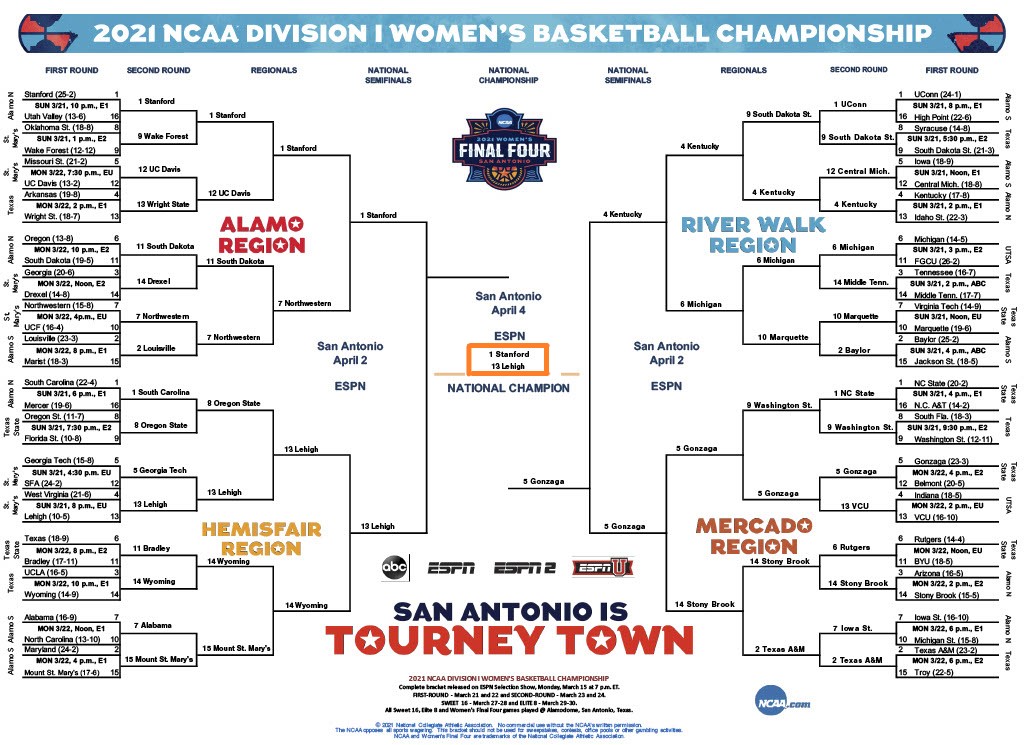You have /5 articles left.
Sign up for a free account or log in.

NCAA
It's a well-established fact that female college athletes perform better academically than their male peers do, especially at the highest levels of competition within the National Collegiate Athletic Association. But comparing this year's academic success tournament brackets for the NCAA Division I women's and men's basketball championships shows that contrast starkly.
Twelve women’s basketball teams competing in the 2021 tournament had perfect Academic Progress Rate scores from the NCAA for the 2018-19 academic year, compared to only one of the men’s teams competing in the tournament this year.
The women performed at such a high level, in fact, that we decided to name two teams the winners of this year’s Inside Higher Ed Academic Performance Tournament for women, because they blew out all of the metrics we use to determine which teams have higher-achieving students. It’s not the first time this has happened for women's teams in the history of our quirky tournament, which gives teams credit for their success in the classroom rather than their skills on the court.
The women's teams at Stanford University and Lehigh University will share the academic crown; both teams had a perfect 1000 on the NCAA’s Academic Progress Rate, a perfect 100 on the NCAA’s Graduation Success Rate and a perfect 100 on the Federal Graduation Rate.
The bracket is based on teams’ most recently reported Academic Progress Rate, the NCAA’s multiyear measure of a team's academic success. APR excludes athletes who leave their institution in good academic standing, so players who leave college to play professionally are not counted as dropouts.
When two teams tie on the APR -- which happened frequently with the women’s teams this year -- we turn to the NCAA's most recent graduation success rate (2019-20, in this case). The GSR measures the proportion of athletes who graduated within six years of entering the institution and, like APR, excludes athletes who leave an institution in good academic standing. The GSR also credits programs for players who transfer in and graduate from the institution, and as a result, the rates on average are significantly higher than the federal government’s graduation rate.
We break ties between teams using the federal rate if completely necessary. For the women this year, that drastic step was taken several times. By the Elite 8, all the women’s basketball teams remaining in the academic bracket had an APR of 1000. The remainder of the bracket was determined by these teams’ graduation rates, when the NCAA’s academic measure wouldn’t do.
Check out the full bracket below.





